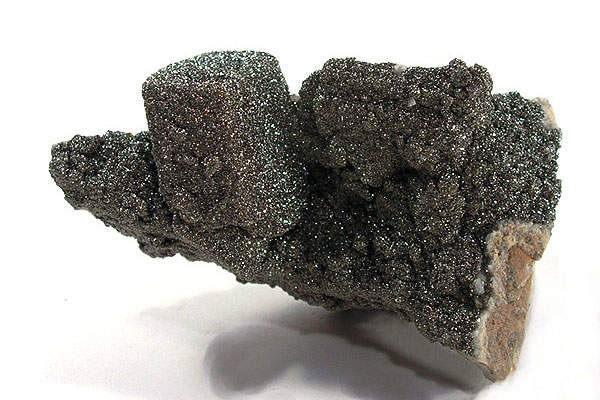The Renison Tin Mine in Tasmania is the biggest operating tin mine in Australia. It has a production capacity of 680,000tpa of tin.
Metals X and Yunnan Tin Group own the mine through a 50/50 joint venture (JV) called Bluestone Mines Tasmania JV.
In 2020, the Area 5 Optimisation Study was completed, in conjunction with an updated Renison life of mine (LoM) plan, extending the mine life to ten years. The optimisation for the two-year Area 5 mining zone development project will result in the mining of 9.27Mt over ten years at an average of 1.38% Sn for 128,000t of contained tin.
On commissioning, production of 8,500-9,000tpa of tin in the first two years will exceed 10,000tpa from 2025. The estimated production is approximately 98,000t of tin in concentrate over the ten-year plan.
Renison tailings retreatment project (Rentails)
The Renison tailings retreatment project (Rentails) is currently in progress near the mine site. It will involve the installation of the latest technology and tin fuming. The feasibility study for the expansion project was conducted in 2009.
Based on an updated feasibility study completed in 2017, Rentails is proposed to retreat the historical tailings for more than 11 years at an average rate of two million tonnes per annum (Mtpa). The concentrator dams are expected to produce approximately 2,200tpa of copper in a high-grade copper matte and 5,400tpa of tin in a high-grade tin fume product.
The project is aimed at recovering tin from around 22.5Mt of tailing deposits at an average grade of 0.44% tin and 0.23% copper from the historic ore processing at the Renison mine.
Location and history of Renison tin mine
The Renison tin mine was first discovered in 1890 by George Renison Bell. It is located 15km northeast of Zeehan on the west coast of Tasmania.
The Australian tin mine was operated under the name Renison Goldfields Consolidated (RGC) during the 1970s and was sold to Murchison United in 1998.
The ownership of the mine was transferred from Murchison United to Bluestone Tin in 2004. Bluestone Tin paused the mining at Renison until 2008 due to higher maintenance costs and reduce tin prices.
Bluestone Tin was renamed as Metals X Limited and resumed mining at Renison in 2008 with the first production commencing in August 2008. Metals X sold 50% of the Tasmanian assets, including Renison Tin Mine, to Yunnan Tin Group of China in 2009 and formed the Bluestone Mines Tasmania JV.
Renison Mine geology, reserves and mineralisation
The Tasmanian region is covered by Palaeozoic sedimentary and volcanic sequences of Dundas Trough in between the Neoproterozoic-Cambrian rock blocks.
The mineralisation is of the mid-late Devonian era. Tin-bearing Devonian granitoids are densely located in the Duncan trough. Devonian Pine Hill Granite, the key area, is situated 1,000m below the surface.
There are three shallow sulphide bands containing dolomite, which form the main mineralisation zone. The Federal Bassett Fault contains siliceous ores with mineral deposits of quartz, arsenopyrite, pyrrhotite and ilmenite bismuth.
The proven and probable mineral reserves at the Renison mine as of March 2020 were estimated at 8.6Mt grading 1.40% tin (Sn) and 0.18% copper (Cu). The
Area 5 development contains estimated ore reserves of 3.30Mt at 1.87% Sn for 61,900t of contained tin.
The current tailings dams contain a probable ore reserve of approximately 99,000t of Su and 51,000t of Cu.
Mining and processing of tin at Renison mine
The Renison tin mine started production in 1968 and its processing plant has a total capacity of 700,000tpa.
The processing of tin ore includes a three-stage crushing, along with primary grind, copper flotation and cassiterite flotation, in addition to concentration.
The tin ore is subjected to fine grinding, magnetic separation, and tin flotation processes. Tin is recovered using LIMS and WHIMS magnetic separation methods. Conventional ball milling using steel media is used to grind the ore.
Gravity tailings are ground to minimise the cassiterite content. Magnetic separation, acid leaching and enhanced gravity separation are performed to enhance the tin flotation feed.
Cassiterite minerals are separated from the hematite using a concentrate cutter. C2000 Falcon centrifugal concentrators in operation at the plant can recover concentrate particles at a rate of 60tph.
Gravity testing is conducted at the laboratory facility at the mine. Minerals are crushed and ground before being subjected to super panning at the laboratory.
Tin production at Renison
Metals X commenced underground mining in 2008 and the tin concentrator was commissioned in 2009. The mine produced 6,266t of tin during 2009-10, 5,000t during 2011-2012 and 7,500t during 2012-2013. The tin production from Renison during 2020 on a 100% basis was 7,182t of tin (Sn) from 848,909t of ore mined at 1.18% Sn.
The produced tin concentrates are be shipped through Port of Burnie.
Contractors involved with Renison Mine’s development
MacMahon had the mining contract at Renison tin mine until March. The scope of the contract included underground production, development works and maintenance of mobile plant assets.
Barminco was awarded a three-year contract for mining development and production in April.






